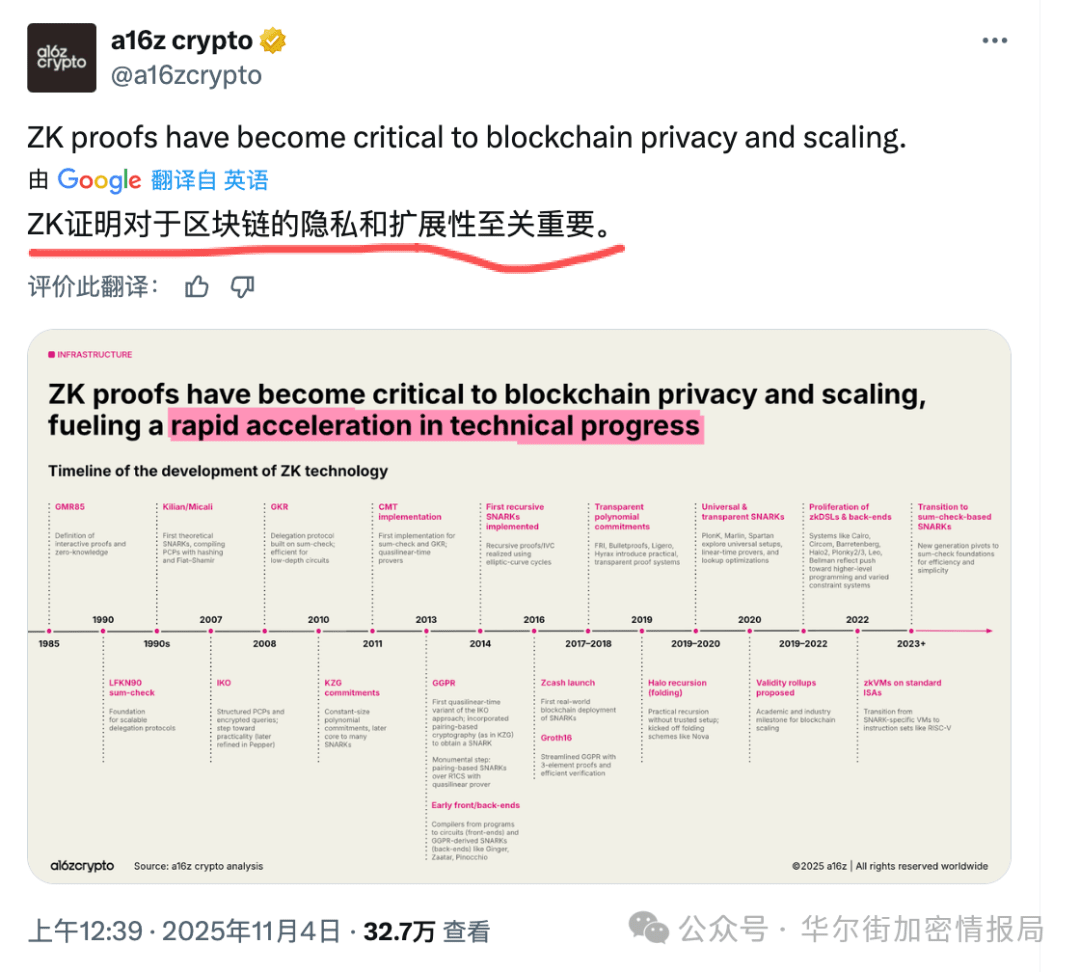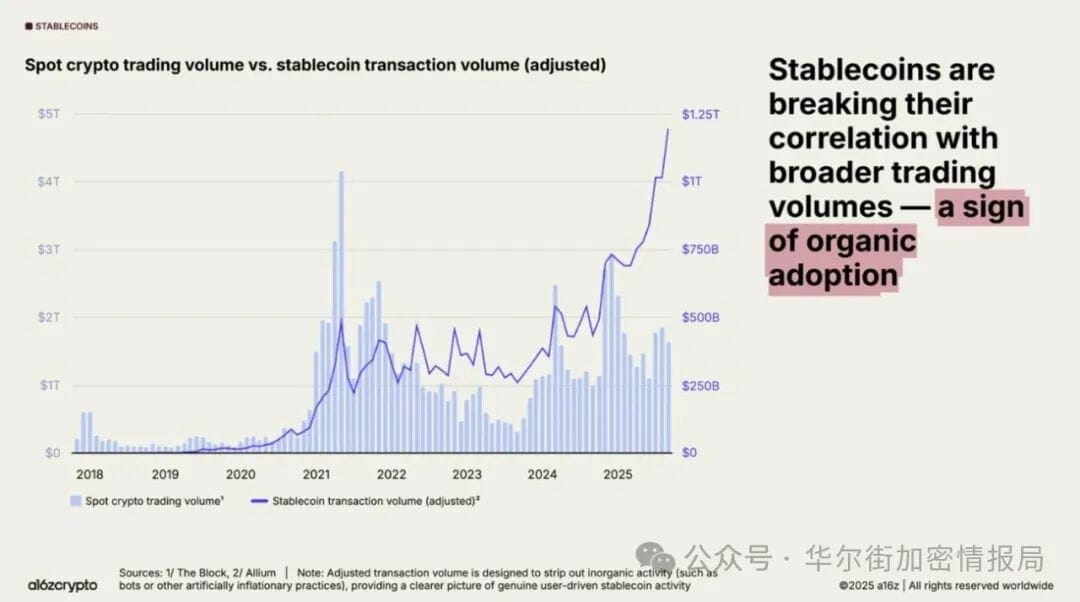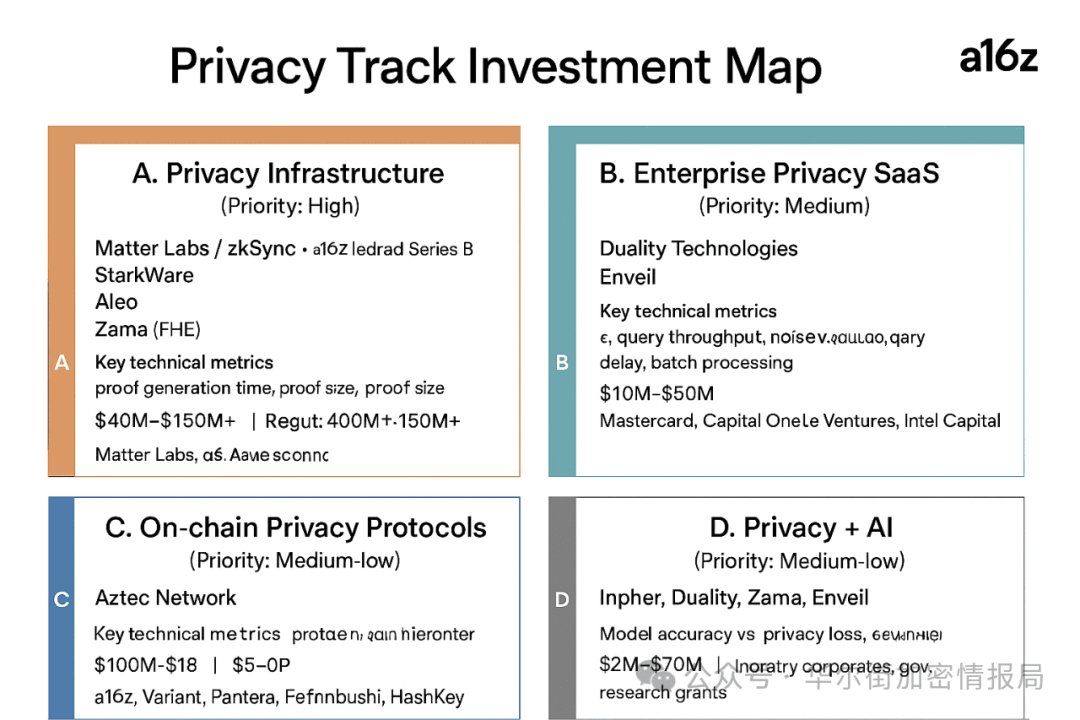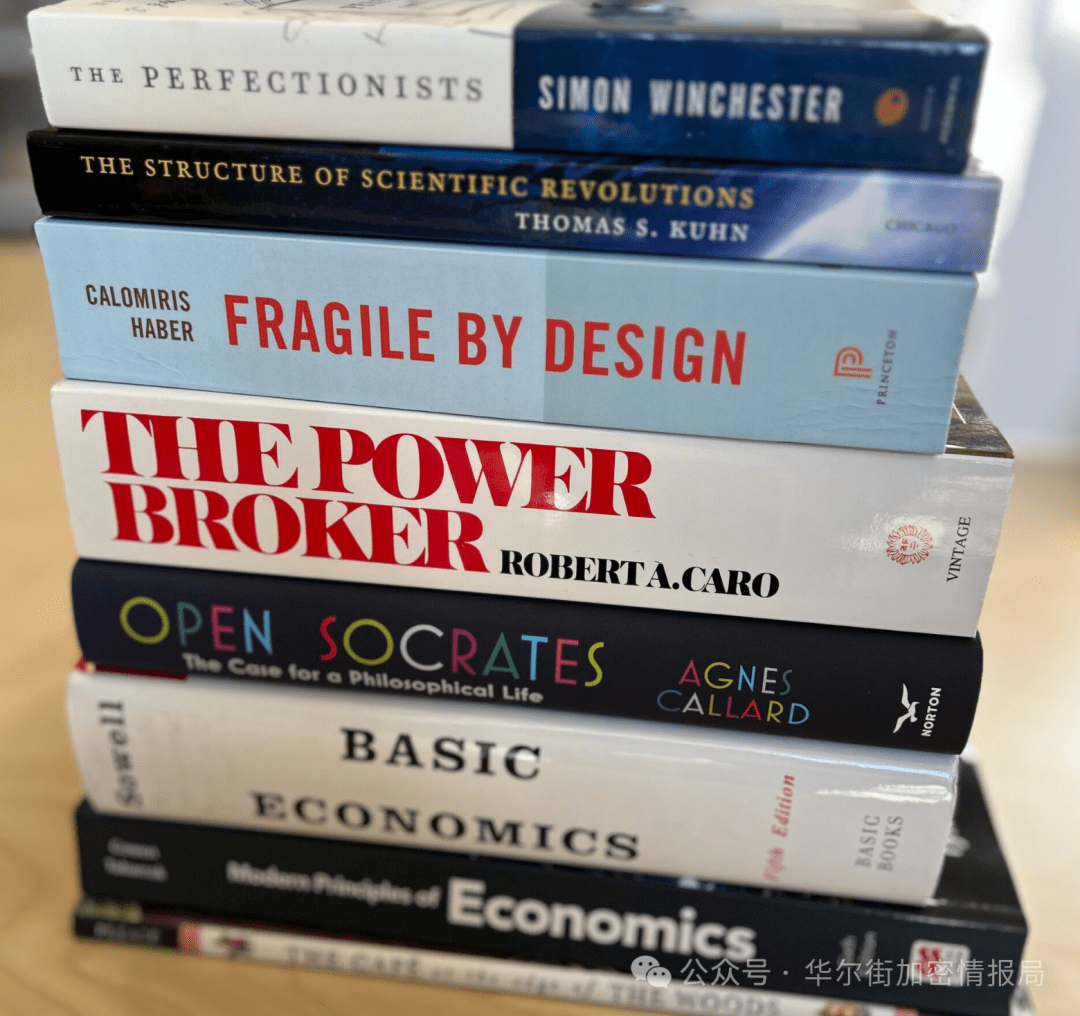
a16z begins to 'call' the privacy track: Infrastructure + compliance moat dual engines driving future investment opportunities.
In the context of data assetization, the AI wave, and regulatory compliance, 'privacy' is no longer just an ethical issue but has become a new battlefield for corporate competitiveness and infrastructure competition.
As a leading venture capital institution in Silicon Valley, Andreessen Horowitz (a16z) has recently frequently published research, articles, and investment layouts on privacy technologies (such as zero-knowledge proofs ZK, multi-party secure computation MPC, privacy computing/federated learning), releasing a strong signal that 'this track has become a long-term strategic direction'.
In this article, Yongqi will analyze the privacy track's scale and growth momentum based on a16z's voice and investment logic, combined with market data, and further sort out investment logic, sub-track positioning, strategic recommendations, and risk perspectives, providing decision-makers with an operable in-depth investment research framework.

a16z's 'call' logic: From research output to capital layout.
Simple Introduction to a16z
Official website: https://a16zcrypto.com/
a16z is short for Andreessen Horowitz (taking the first letter 'a' and the last letter 'z', with 16 letters in between), founded in 2009 in Silicon Valley by Marc Andreessen and Ben Horowitz.
Core Characteristics: It is one of the world's top and most influential venture capital firms, known for its aggressive investment strategy of 'betting on tracks', strong marketing capabilities, and comprehensive operational support for investees.
Investment Stage: Covering the entire entrepreneurial cycle from seed to growth stage.
Investment fields: Software, biotechnology, fintech, etc., but the most notable is its layout in cryptocurrencies and Web3.
Unique Philosophy: a16z firmly believes that software is eating the world and further believes that cryptocurrencies and Web3 are at the core of the next generation internet (Web3).
They not only provide funding but also offer comprehensive support in legal, regulatory, marketing, and talent recruitment through their vast network of experts, helping startups grow.
Successful investment cases of a16z in the cryptocurrency field
a16z is one of the most active and successful institutional investors in the cryptocurrency field. They have invested billions of dollars in this field through multiple dedicated cryptocurrency funds. Here are some of their most famous and successful investment cases:
1. Coinbase - Cryptocurrency Exchange
Investment Time: As early as 2013, a16z led the B round of financing for Coinbase. This is one of a16z's most classic and rewarding investments in the cryptocurrency field. Coinbase later grew to become the largest cryptocurrency exchange in the United States and went public directly in 2021. This early investment by a16z yielded over $7 billion in returns, making it legendary.
2. Uniswap - Decentralized Exchange
Investment Time: In 2020, a16z participated in investments before the governance token UNI was launched. Uniswap is a cornerstone project in the DeFi field, pioneering the decentralized exchange model of automated market makers.
3. Solana - Public Chain
Investment Time: In 2021, a16z led a $314 million financing round for Solana Labs. At that time, amid Ethereum network congestion and high fees, a16z heavily bet on Solana, a new public chain that promotes high speed and low fees, greatly enhancing Solana's visibility and ecological development speed, making it one of Ethereum's most formidable competitors.
4. Dapper Labs - NFT development company, Yuga Labs - Bored Ape Yacht Club developer, Compound - lending protocol, OpenSea - NFT marketplace, etc.
Signals behind the call
a16z has repeatedly emphasized the importance of privacy technology through its blog, white papers, and policy comments. For example, the article 'Decentralized Speed: Advances in Zero Knowledge Proofs' deeply explores the application of ZK technology in blockchain and identity verification, privacy protection; and another article 'AI Model Facts: Transparency that Works for Little Tech' links privacy with AI model transparency and regulatory compliance, indicating that their focus is expanding from 'cryptographic privacy' to 'AI-era data privacy'. These statements are not just technical discussions but also have ecological guidance and capital signal significance:
Technical Aspect: a16z believes that privacy technology is moving from the laboratory to commercialization;
Ecological Aspect: Privacy issues are closely related to regulation/compliance, commercial data flows, and industrial infrastructure;
Capital Level: Creating a cognitive atmosphere for the invested track through content output, reducing educational costs and increasing industry acceptance.
Capital layout and strategic intent
Although a16z has not disclosed a complete breakdown of the privacy track in its entire investment portfolio, a clear trend can be observed from its public investments and research actions:
Prioritize investment in the 'privacy infrastructure' layer, such as ZK rollup, privacy computing engines, MPC services, etc. These types of projects possess platform potential and long-term moats.
At the same time, focus on the direction of 'privacy compliance + enterprise applications', seeking commercial paths for privacy technology in scenarios such as data compliance, cross-institution data sharing, and advertising measurement.
In the Web3/blockchain direction, bet on on-chain privacy protocols and verifiable privacy layers. This indicates that they believe privacy technology is both the foundation of the decentralized ecosystem and a part of the traditional enterprise data strategy transformation.
When a16z repeatedly emphasizes privacy technology in its research channels and investment announcements, positioning it as a long-term infrastructure theme—we can view its actions as a 'track call': that privacy technology is being recognized by capital and ecosystems as a focus of investment for the coming years.

Privacy track size and growth characteristics: Data support perspective
1. Market Size and Growth Expectations
Data One: According to a Grand View Research report:
The global market size of Privacy-Enhancing Technologies (PETs) in 2024 is estimated to be about $3.12 billion, expected to reach about $12.09 billion by 2030, with a compound annual growth rate (CAGR) of about 25.3% from 2025 to 2030.
Data Two: Another research institution estimates that the scale will be about $3.6 billion in 2024 and could reach about $12.8 billion by 2030, with a CAGR of about 23.5%.
Data Three: Multiple reports indicate that if estimated by a broader scope (including privacy computing, federated learning, blockchain privacy layers), it is expected to reach billions to hundreds of billions of dollars in scale over the next decade.
It can be seen that the privacy track is currently at a billion-dollar scale and has the potential for a 20%-30% annual growth rate in the future, which is already a relatively strong medium to long-term track in infrastructure-type technologies.
2. Growth Driver Analysis
Regulatory and compliance pressure: From EU GDPR, California CPRA in the United States, to increasingly stringent global data protection requirements, enterprises must rethink 'how to balance data availability/privacy protection'. Privacy technology thus gains commercial necessity.
Data value enhancement, increased privacy costs: Data has become a core asset, and the fines, brand damage, and regulatory penalties resulting from data breaches are continuously increasing; enhancing privacy protection capabilities has become essential for enterprises.
Technical maturity improvement: For example, fields such as ZK proofs, MPC, and homomorphic encryption are moving from theory to engineering. a16z points out in its articles that the performance and applicability of ZK are improving rapidly.
Emerging application scenarios catalyzing: Including the need to protect data privacy in AI training sharing, privacy protection attribution in advertising measurement, decentralized payment with privacy asset needs in blockchain, cross-institutional data collaboration needs, etc.
Ecological infrastructure improvement: From early research projects to commercial platforms, the privacy track is forming a complete chain of 'technology → infrastructure → services → applications'.
3. Layering application scenarios
Technical Categories: ZK proofs, MPC, multi-party secure computation, homomorphic encryption, differential privacy, federated learning, trusted execution environments (TEE), etc.
Application Categories:
Blockchain/Crypto Asset Privacy: Transactions that are verifiable but do not disclose identity, anonymous asset protocols, privacy Layer 2.
Enterprise data compliance sharing: Cross-institutional data collaboration, data trading markets, privacy protection in advertising attribution.
AI Models and Data Sharing: Protect data privacy during the training process while allowing model sharing.
Identity/Certification Systems: Anonymous certification, privacy identity credentials, de-identification processes.

Investment Logic and Sub-track Positioning
First, clarify investment logic
First, from technical barriers to commercial moats: Only when privacy technology moves from research to operational and scalable solutions can investment value be realized. Technology is just the starting point; commercialization is the endpoint.
Second, platform value exceeds single product: If a certain privacy technology becomes a standard component for upper-layer applications (such as ZK prover, MPC service platform), its returns and moats far exceed single applications.
Third, compliance needs provide a long-term customer base: enterprises are willing to invest in privacy products to meet compliance and avoid regulatory fines, making the privacy track have continuous payment potential.
Fourth, on-chain privacy provides a trust foundation for Web3: In a decentralized ecosystem, privacy is not only a compliance tool but also a user experience and ecological trust mechanism.
Fifth, the institutional/discourse level remains critical: Beyond technological victories, the maturity of the privacy track largely depends on the institutional environment, industry standards, and regulatory attitudes. a16z's policy research serves this dimension.
Next, sub-track sorting and priorities
Based on barriers, maturity, and return potential, I suggest the following order:
Privacy infrastructure (highest priority): ZK-rollup, zkVM, MPC-as-Service, homomorphic computing engines. The advantage lies in high barriers and strong platform potential.
Enterprise privacy SaaS/data compliance services (medium priority): Differential privacy tools, privacy data markets, de-identification services, compliance audit platforms. Clear paths and strong willingness to pay.
Blockchain privacy protocols/privacy asset layers (high risk high return): Anonymous asset protocols, privacy chains, verifiable privacy Layer 2. High potential but significant policy and ecological risks.
Privacy + AI/data sharing (future-oriented): Federated learning + privacy protection, differential privacy in data trading, AI model privacy sharing. Long return cycles, paths are still in formation.
Final investment strategy recommendations
Funding allocation recommendations: It is recommended to allocate 5%-10% of the portfolio to the privacy track, prioritizing sub-track 1, followed by sub-track 2, with small allocations for sub-tracks 3 and 4.
Stage Recognition:
Seed/A rounds: Focus on team background (cryptography/systems), early customers/pilots, and technology prototypes.
B round and beyond: Look at ARR, customer scale, industry penetration, and whether the business model is replicable.
Exit Strategies: Infrastructure companies are often acquired by large cloud service providers or security companies; privacy SaaS companies may consider independent development; blockchain projects depend on ecological and token economic situations.

Latest signals and case observations
In April 2025, a16z published an article (AI Model Facts: Transparency that Works for Little Tech), extending the privacy topic to AI model training and transparency/compliance frameworks.
This move indicates that the privacy track is extending into 'AI'.
a16z has recently released a report related to 'Path to zkVM' in its Crypto research channel,
Pointing out that although it is still in the development stage, 'safe and efficient zkVM' has been regarded as the next generation infrastructure.
In terms of blockchain privacy protocols, a16z's leading investment in the Aztec Network Series B (2022) is a clear capital move betting on privacy infrastructure.
These signals collectively point to: the privacy track has entered the 'capital/ecosystem recognition stage' from the 'concept phase', and its infrastructure and compliance path are accelerating into shape.

Risk Perspective: The challenges of the privacy track cannot be ignored.
First, regulatory policy uncertainty: Privacy technology may be placed in the regulatory gap of anti-money laundering, national security, and data sovereignty.
Second, the maturity of technology and costs have not yet been eliminated: for example, MPC and homomorphic encryption still face issues of latency, throughput, and high costs.
Third, the market adoption pace may be slow: Despite clear demand, the path from awareness to payment for enterprises is not smooth.
Fourth, competition and substitution risks: If core privacy algorithms are open-sourced or built into cloud vendors, it may weaken early vendors' pricing and moats.
Fifth, unique risks in the crypto/blockchain sub-track: Including token economic uncertainty, policy suppression, ecological path dependence, high user education costs.
Therefore, investors need to have a long-term perspective, patience, and risk buffer mechanisms.

Yongqi's Summary:
The privacy track is welcoming structural opportunities—technical breakthroughs, compliance needs, and capital recognition are resonating together.
And a16z's 'call' behavior provides strong capital and ecological signals for this track.
For investors, the optimal path is to start from infrastructure and platform technologies, combined with privacy service companies where the commercialization path is clearer, while retaining a small amount of longer cycle, higher risk on-chain privacy or AI privacy layouts.
Only by patiently waiting for the three legs of technology, customers, and systems to take shape can we truly reap the long-term dividends of this track.
Deep observation · Independent thinking · Value beyond price.
Star #Wall Street Crypto Intelligence Bureau, don't miss good content ⭐
Finally: Many of the views in this article represent my personal understanding of the market and do not constitute advice for your investments.



